Outlander the series has brought awareness to Scotland’s many historic sites. In this Outlandish Locations post we look at Linlithgow Palace, parts of which were used as Wentworth Prison in the TV show.
As we ready for the premiere of Season 5, the story of Outlander is now being told from the perspective of Jamie and Claire as American homesteaders in North Carolina. Despite actual filming still taking place in Scotland, less frequently seen will be some of the grander film sites used in Outlander Seasons 1 and 2. Blackness and Aberdour Castles come to mind, as well, as Hopetoun House and the peculiar Midhope manor house, a.k.a. Lallybroch. Instead we will see more log cabins, tent cities and the “Big Hoose” — all grand creations of genius set designer Jon Gary Steele. We look forward to that, as Steele rarely disappoints. But, for those feeling a bit homesick for the “Scotland years” of Outlander, there remains a long list of filming sites that deserve a second look beyond just how they were used in the series.
Visit Scotland just completed its most recent *map* of Outlander filming locations — now up to date through Outlander Season 4. It’s a handy reminder of how many wonderful locations were used to great effect. And, yet, as thrilling as it may be for some Outlander fans to visit these film sites, I’d posit that it’s also very important to understand and appreciate the provenance of these locations. We do a disservice to Scotland if we don’t take the time to understand the fantastic history and origins of some of these familiar sites. It’s why Outlander Cast Blog brings you another in our Outlandish Locations Series, highlighting the history and the lore of another of these filming locales — Linlithgow Palace.
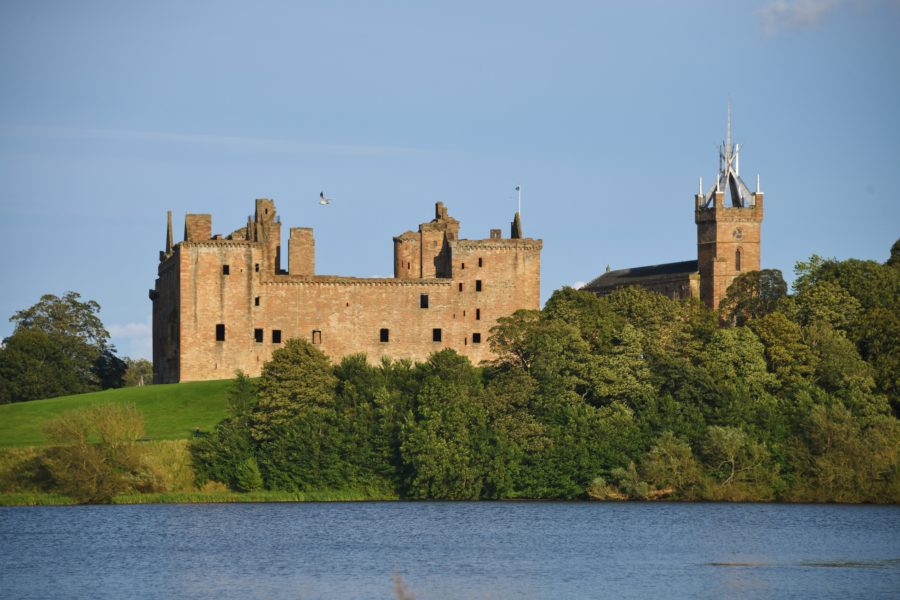
credit: Gary Dempster Photography
Located between Edinburgh Castle and Stirling Castle in West Lothian, Linlithgow Palace is best known as the birthplace of Mary Queen of Scots and several other Scottish and English monarchs. Linlithgow means “the loch in the damp hollow” so named because beneath the palace lies a small lochan. For most of its history Linlithgow served as a royal residence — a true palace fit for Kings and Queens and a place of opulence. However, as with most early structures in Scotland, what we know now as Linlithgow Palace replaced a fortification. An English fort known as “the Peel” was built in the 14th century by occupying forces under Edward I. Edward coined the term “peel” from the Old French “pel,” meaning “stake.” No visible ruins of the original Peel fort survive, although archaeology work is currently underway at the palace examining some of the stone foundations. Some in-the-know have suggested there may still be some bits of the original Peel to be uncovered. Today the expanse of parkland beneath the palace is now referred to as “The Peel.” It’s a 2 ½ mile circular walk known for its waterfowl, aquatic plant life, and views of the palace, Church of St. Michael and the town.
As mentioned, sitting nearly square between Edinburgh and Stirling, the Peel was an ideal base for military supply routes. The area surrounding what is now Linlithgow Palace served as a military fortification for nearly 100 years until it was almost entirely destroyed by a great fire in the town in 1424. It was then that upon King James I’s return from captivity in England that he decided to build a grand palace for Scottish royalty in place of the military fort. It was at this same time that James I also began rebuilding the Church of St. Michael just outside the main palace entrance. For roughly the next century, the palace grew with significant additions by James III and James IV. Highlights of the James’ work include the Great Hall, Royal apartments and a three-tiered, extremely ornate fountain. The result of all the building works was an impressive quadrangle palace — its four ranges grouped around the central courtyard.
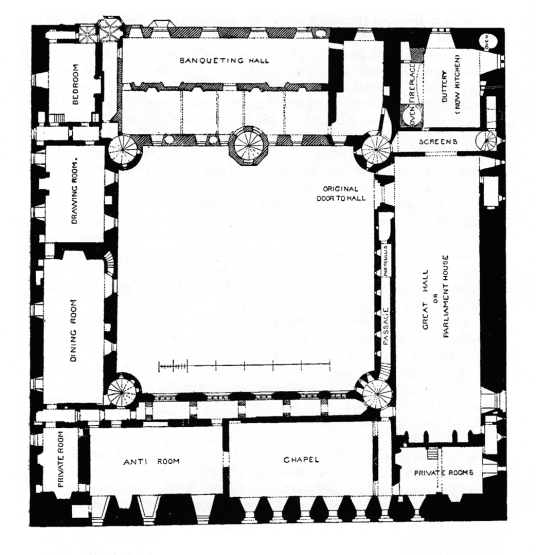
First Floor rendering
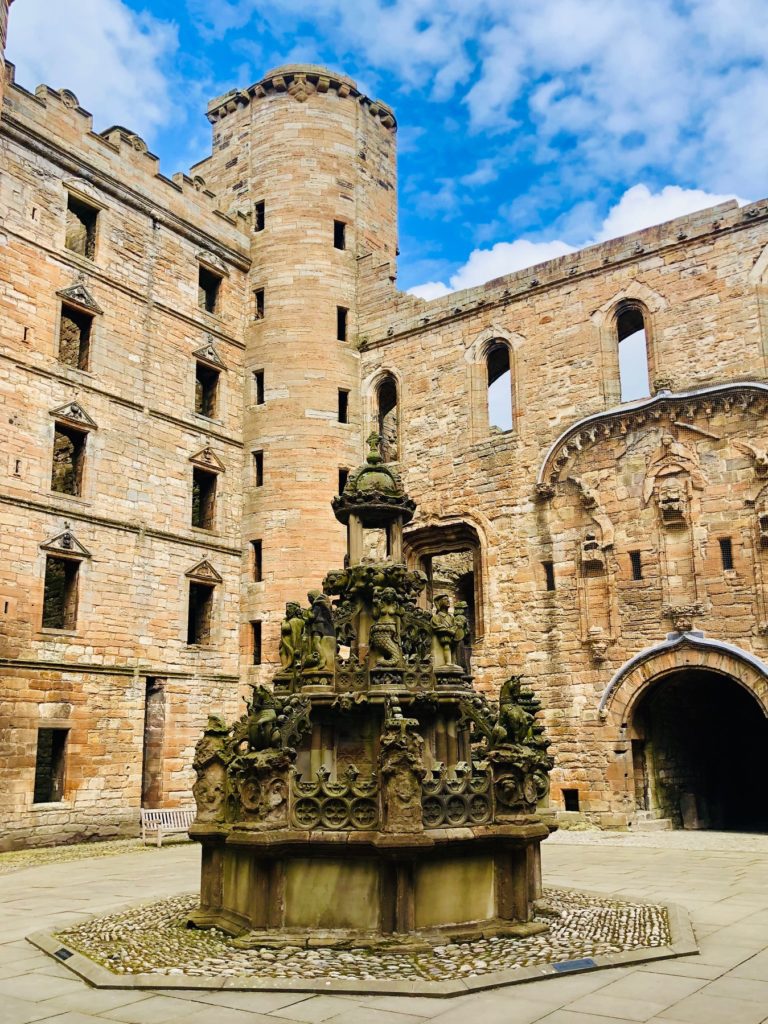
Central Courtyard Fountain
James V, father of Mary Queen of Scots, was born at the palace in 1512, and was the visionary behind the elaborate courtyard fountain that dominates the central palace square. If visiting in late summer, you’ll be fortunate to see the fountain come to life gurgling as it likely once did centuries ago. Mary Queen of Scots succeeded her father, James V, when she was just six days old after being born at the palace in 1542. When visiting Linlithgow it’s not hard to see why Mary and other Stuart queens spent so much time there amidst the fresh air and peaceful surroundings of the loch and woodlands beneath the palace. This includes Margaret, the wife of James IV, who was bestowed Linlithgow Palace as a wedding gift, as well as Mary Guise, mother of Mary Queen of Scots. Some say they have seen the ghost of Mary Guise wandering the part of the palace that was the royal apartments from time to time.
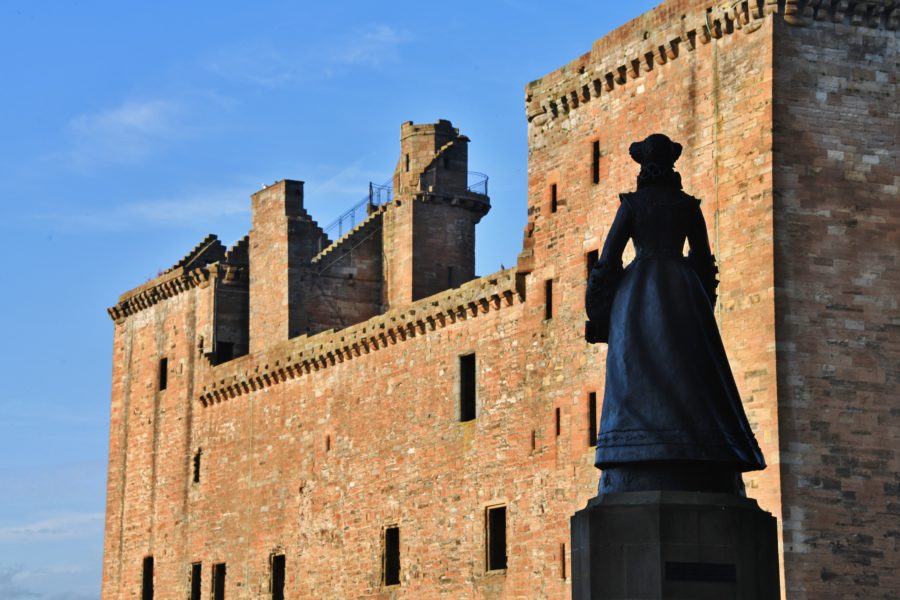
credit: Gary Dempster Photography
And then there is the remarkable story of Bonnie Prince Charlie who visited the palace very briefly in 1745 on his way to reclaim the capital city of Edinburgh for the Scottish throne. The town of Linlithgow was abuzz with word that the Bonnie Prince would be passing through. It is said that the fountain in the courtyard of the palace poured red wine in the prince’s honour. What a sight that must have been! Unfortunately, just a year later the prince and his army of lowlanders and highlanders had lost the bitter Battle of Culloden. The prince was on the run — over the sea to Skye — and the Duke of Cumberland, a.k.a. the “Butcher,” arrived at Linlithgow with over 10,000 Hanoverians. Cumberland’s troops camped around and inside the palace. On the morning the troops departed a large fire broke out at the palace that was thought to have been deliberately set. Although the townspeople tried to save many of the antiquities from the palace, not much was ever recovered and the fountain and much of the masonry of the palace was seriously damaged. Damn Red Coats!
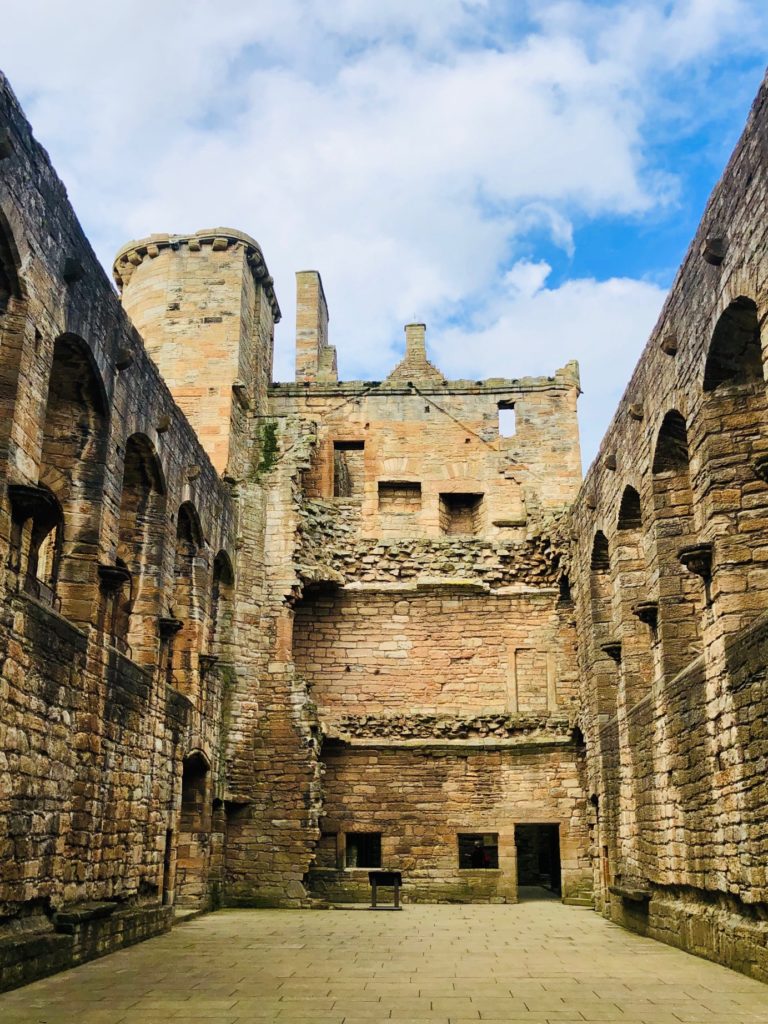
Great Hall at the palace
I mentioned earlier that some of Linlithgow stood in for Wentworth Prison in Outlander Episode 1.15. The Jamie torture and rape scenes were primarily shot at the Wardpark Studios in Cumbernauld. However, the very friendly Historic Scotland staff at Linlithgow Palace are more than pleased to show you the bits of the palace that were used for filming. This includes a staircase and some “basement” rooms. In Episode 1.15, we see Claire scurrying about trying to remain undetected while she searches for Jamie in some of the dungeon “prison cells.”
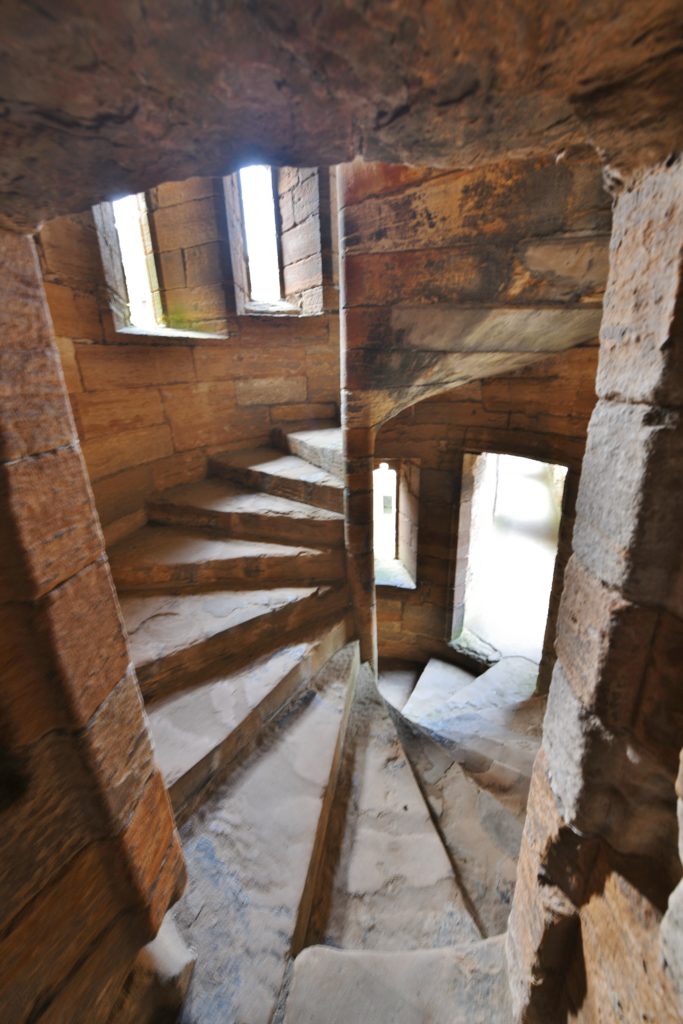
credit: Gary Dempster Photography
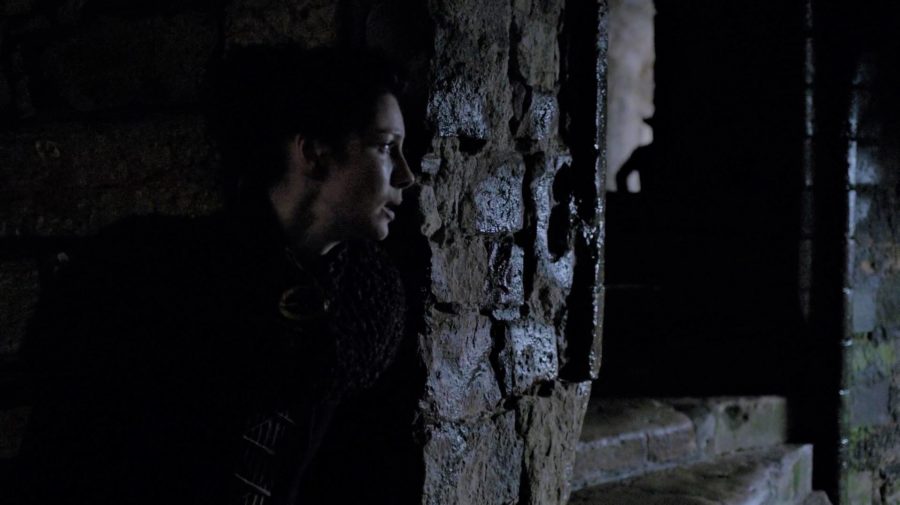
Outlander-Online
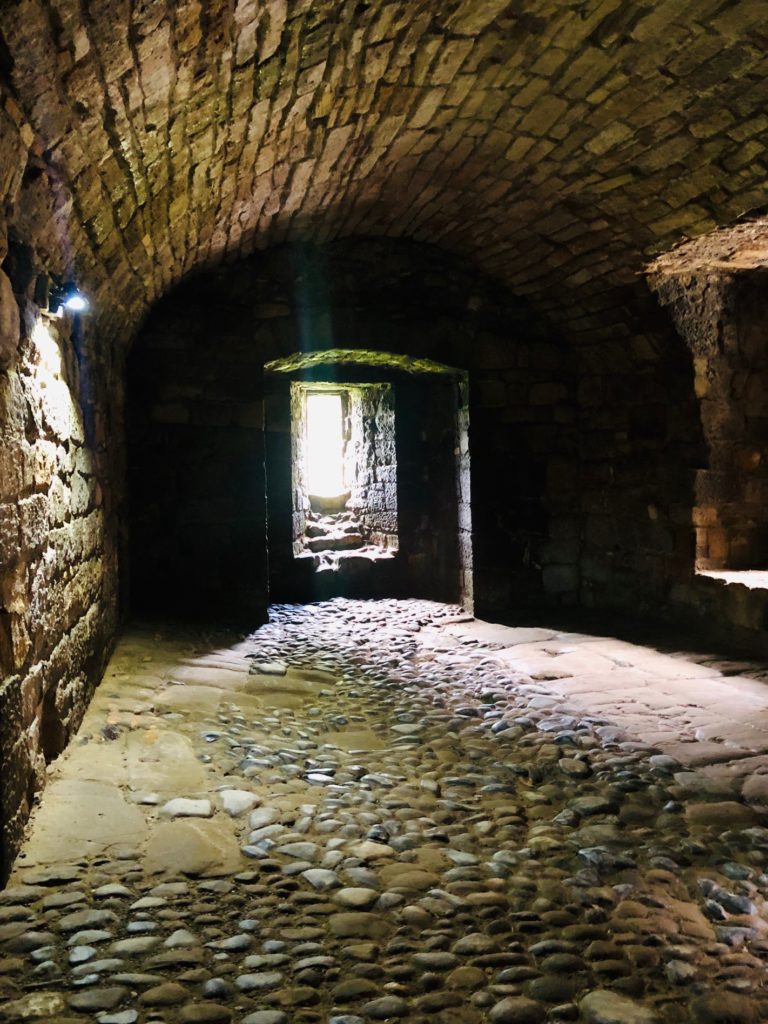
Palace Room used in Episode 1.15 as “prison cell”
A short scene was also filmed at the entrance/gatehouse of the palace, where Claire emerges and meets Murtagh who catches her as she faints from illness. You don’t see them in the series, but James V added the archway above the gatehouse entrance, which includes some colorful painted panels depicting the order of knighthood bestowed on James. The panels show The Golden Fleece, St. Michael, The Garter and The Thistle and are meant to demonstrate James’ importance and international allegiances.
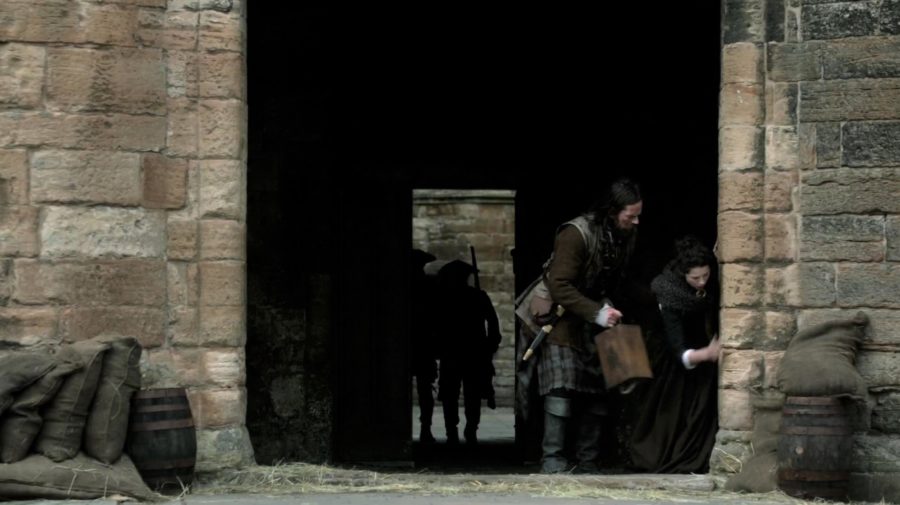
Outlander-Online
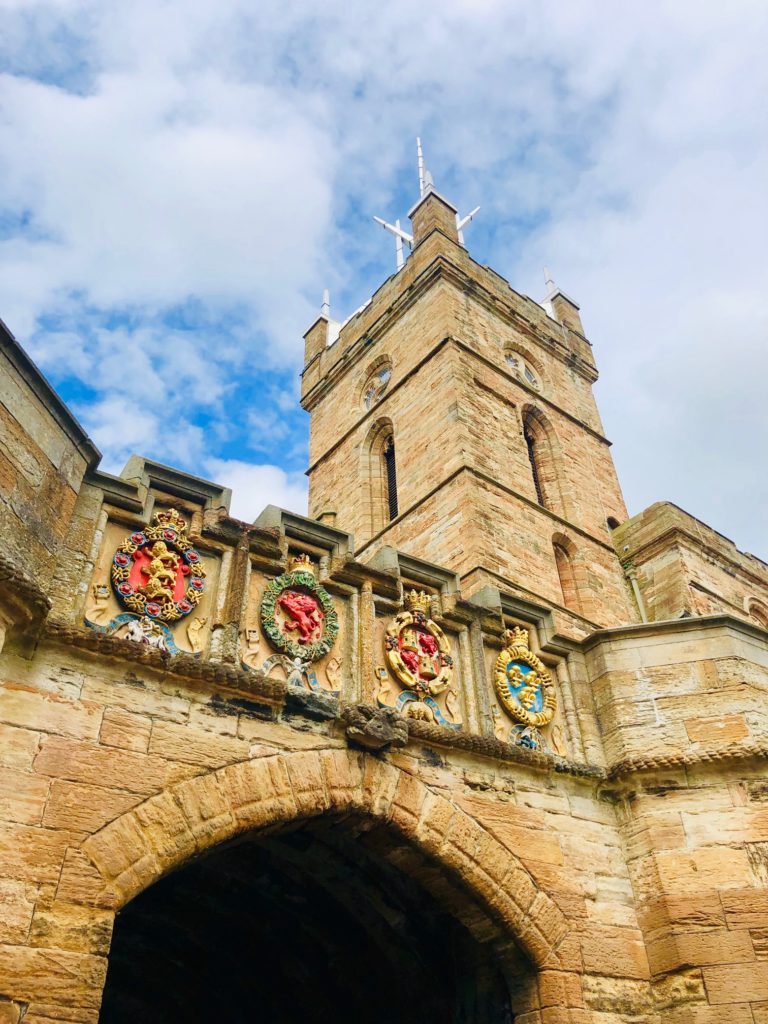
And, did I mention the Historic Scotland staff are very accommodating? I often wonder if staff at these Outlander film sites ever tire of answering the inevitable Outlander questions. In researching this blog post, I came across a humorous missive from one of the Linlithgow staff. She writes a regular column for the local newspaper called “Tales from the Palace.” I had to chuckle at this one that describes some of the more unusual encounters she has had with the ever enthusiastic, but not often extremely historically knowledgeable, Outlander fans and tourists in general. The post is written in good humour and the staff there profusely acknowledge their gratitude for interest in the palace and the increasing number of visitors, but I had a laugh reading it. You can scroll down and read this post titled “Tourist Thinking” at this link.
Today the palace frequently hosts special events including an annual jousting contest, music festivals, Halloween/Samhain events and in 2012, the Chanel fashion label held a couture show there. They constructed a temporary catwalk around the main courtyard and the show took place in the evening illuminated by candlelight and braziers. The Karl Lagerfeld-created collection was inspired by Scottish style and used a lot of tartan fabrics. How fabulous must that have been?

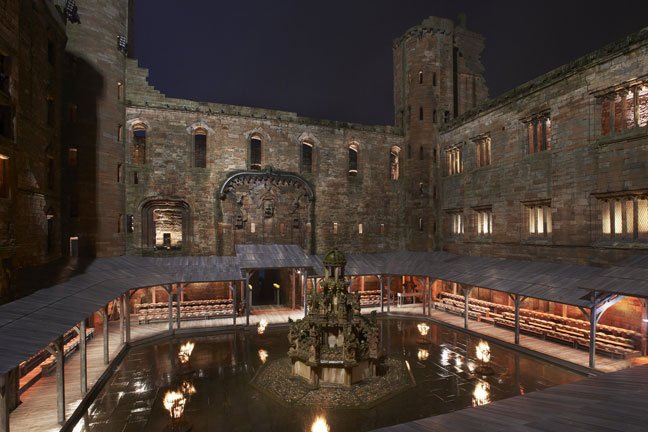
Chanel Couture Show 2012
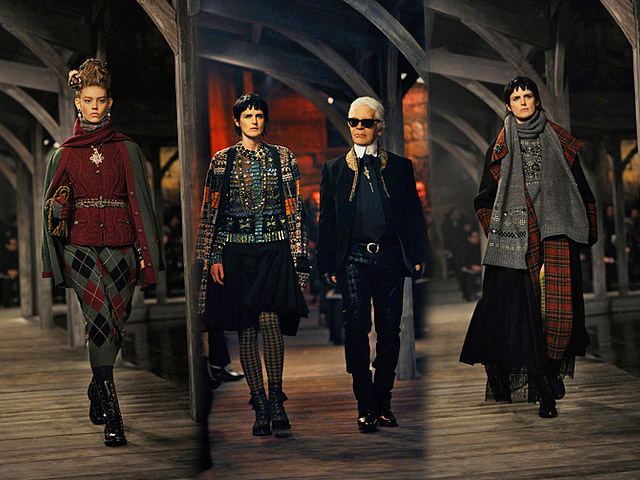
Karl Lagerfeld and Collection from Linlithgow 2012
My visit to Linlithgow Palace earlier this year came at the tail end of nearly four weeks of Scotland adventures. We were blessed with a beautiful day and just enough energy left to explore this amazing historic location to its fullest. I found myself more intrigued by the palace’s captivating history than I was by the fact it was used as a location in Outlander, which we only really asked about as an afterthought. My hope through blog posts such as this is that we can go beyond the interest in our beloved Outlander and spend the time necessary to see how the remains of these spectacular antiquities fit into the passionate and often bloody history of Scotland. Interest in Scotland and its history is one of the very best take-aways from my Outlander obsession. I’ve learned so much and have come to appreciate Scotland’s complex past, some of which is playing itself out in modern day Scotland.
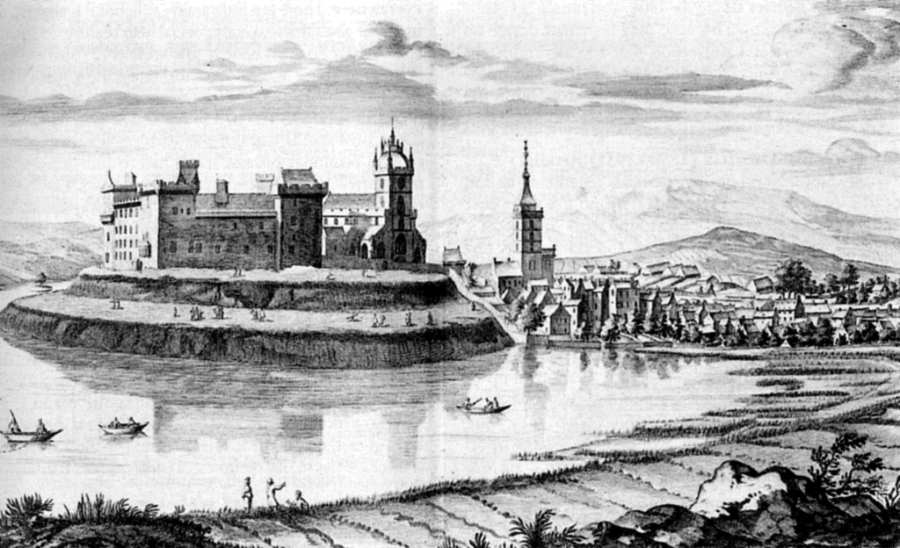
Add Linlithgow Palace to your itinerary when you come to Scotland. It is another Outlandish Location that demands to be treasured both for its historic past and its present. You won’t be disappointed!
*Note* Thanks to Gary Dempster Photography for use of some photos.
What interests you the most about Linlithgow Palace? Will you add it to your Scotland itinerary?
Be sure to read more from our Outlandish Locations Series:
Blackness Castle – aka “Fort William”
Village of Culross – aka “Crainsmuir”
Midhope Castle — aka “Lallybroch”
Anne Gavin is a senior writer at Outlander Cast and obsessive frequent traveler to Scotland. Anne also writes a series of travel blogs called “The Scotland Diaries.” Her 2016, 2017 and 2018 travel series can be found at Outlander Cast by searching “Scotland Diaries.” Follow Anne on Instagram here or at Outlander Cast’s Instagram here, where many of Anne’s photos of Scotland are often featured.


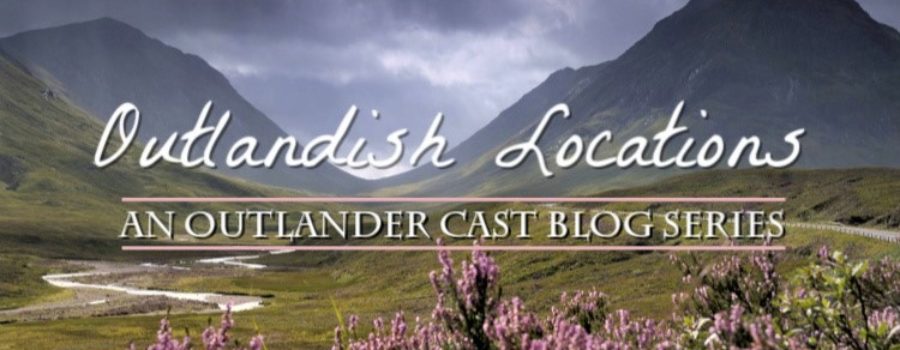



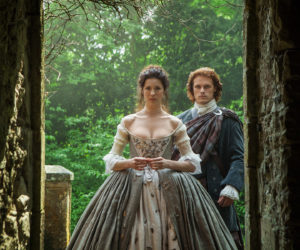

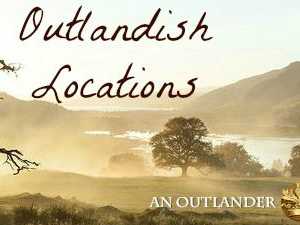





Leave a Reply
Your email is safe with us.